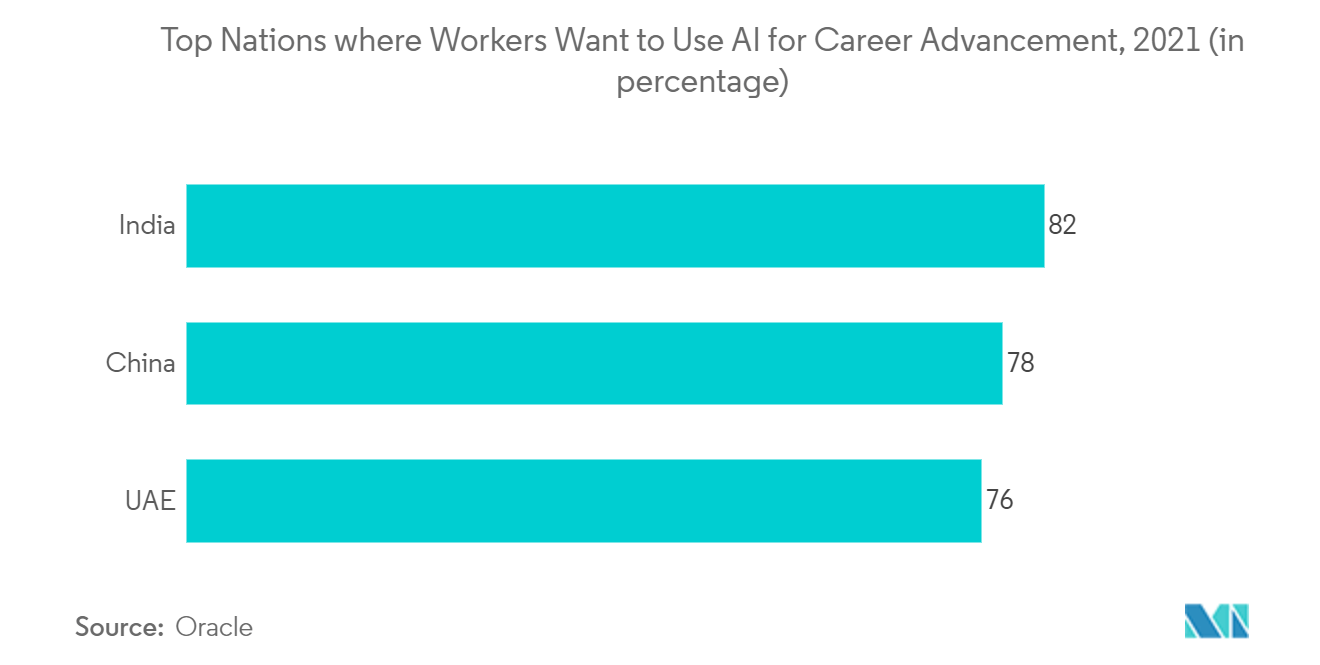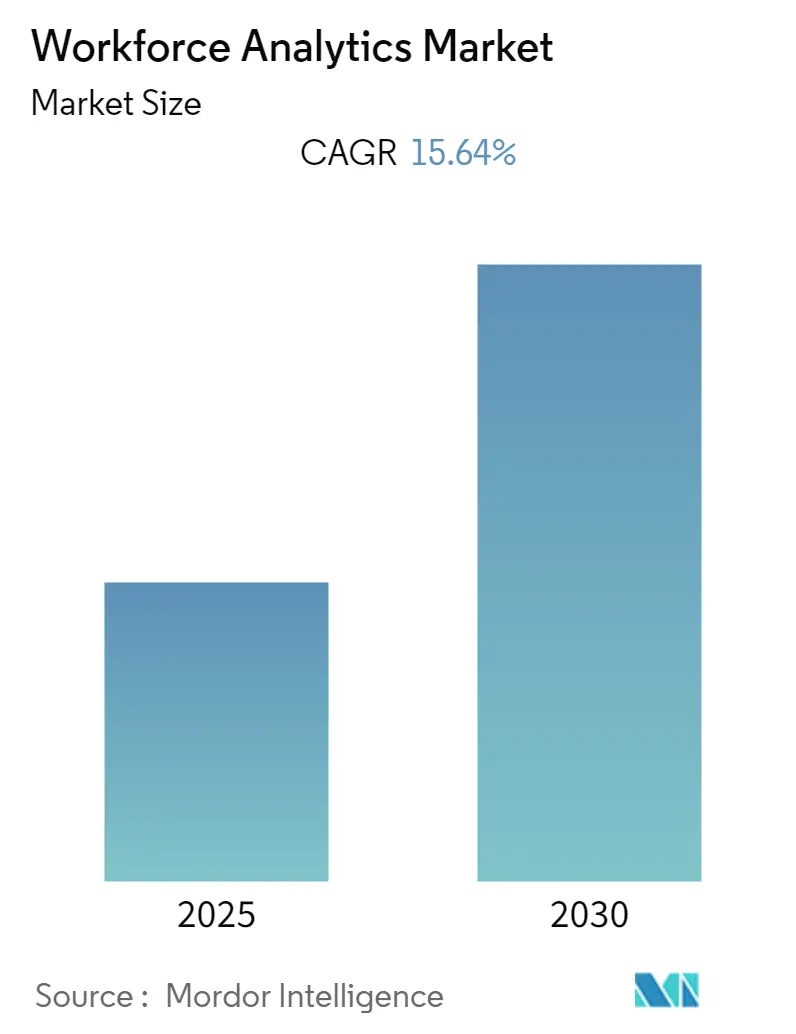
| Study Period | 2021 - 2030 |
| Base Year For Estimation | 2024 |
| Forecast Data Period | 2025 - 2030 |
| CAGR | 15.64 % |
| Fastest Growing Market | Asia Pacific |
| Largest Market | North America |
| Market Concentration | Low |
Major Players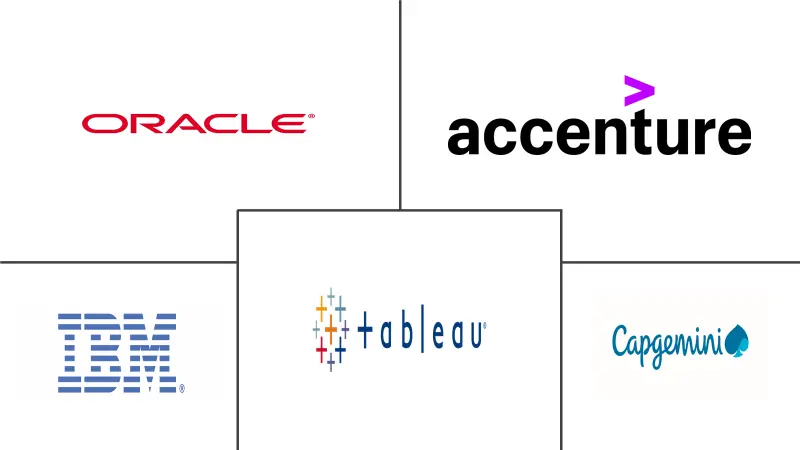
*Disclaimer: Major Players sorted in no particular order |
Workforce Analytics Market Analysis
The Workforce Analytics Market is expected to register a CAGR of 15.64% during the forecast period.
- Workforce analytics is used to study the behavior of employees and people data using analyzing people data to make better workforce decisions. This helps increase the productivity of the existing employees instead of hiring additional staff and improves the selection criteria.
- Predictive workforce analytics is one of the critical subtypes of workforce analytics. To forecast, utilizing past data refers to performing workforce analytics to create forecasts. Machine learning and data mining are the primary statistical models employed in this workforce analytics. Many firms use predictive workforce analytics to enhance the employee experience and streamline processes. Regression analysis, pattern matching, multivariate statistics, and other techniques are frequently used in this process to help businesses predict what is likely to occur in the future in terms of risks and talent outcomes.
- In this globalized world, the organization requires flexibility, speed, innovation, and talent to differentiate itself from other firms. It has let employees focus on workforce strategy and employee investment to support business growth and objectives. For instance, Mindtree used HR analytics tools in turnover modeling, risk assessment, management profiles, and productivity indexing. HR analytics tools have helped them predict employee turnover for the subsequent 90 days and enabled them to create usable insights from data analyses used in the forecasting model for the hiring teams.
- However, the lack of product information and the high cost of deployment are a few factors restraining the market from growing in the forecast period.
Workforce Analytics Market Trends
Performance Monitoring Offers Potential Growth
- According to a report by Oracle last year, 55% of the global workforce would be more likely to stay with an organization that uses AI to assist career progression. An increase in the implementation of big data analytics and artificial intelligence is contributing to the growth of the workforce analytics market.
- As a subset of HR analytics, workforce analytics assists HR teams in maximizing their organizations' human resources by tracking and measuring employee-related data. By focusing on the return on investment for each hire, the field goes far beyond hiring and dismissing. Furthermore, it highlights additional detailed information that aids in recognizing trends in the workplace, including potential risk factors, satisfaction with decisions, and more.
- Further, real-time talent decisions are the need of the hour, with market dynamics changing quickly. Human capital is the most valuable asset of any organization, and employee performance significantly impacts the bottom line. Thus, monitoring their employees' performance gives a clear picture of what parts of their performance need improvement and which sections are meeting or exceeding expectations. For example, India's leading IT services companies, Tata Consultancy Services, and Infosys, have shifted to a continuous performance system. By doing so, these two organizations believe they will be able to monitor employee performance at regular intervals and predict their behavior, which could affect their engagement levels.
- Monitoring performance data also helps evaluate how effectively managers engage with employees to set expectations, clarify doubts, plan improvement, and address performance anxieties. For example, Google utilizes HR analytics for its talent management activities. It is Project Oxygen analyzed its internal data to quantify what active managers do. It developed a management training program that consolidated eight behaviors, which led to better managerial quality.
- Therefore, the aforementioned factors are expected to boost workforce analytics market during the forecast period.
Asia-Pacific to Witness Fastest Growth
- The Asia-Pacific region is expected to witness the fastest growth during the forecast period because of the shift toward more employee-centric organizations. The companies are focusing on their employees to gain regional competitive advantages. Therefore, they are implementing workforce analytics to get a clear picture of the internal framework.
- Moreover, the government's initiatives, such as Startup India, to encourage entrepreneurship within the country are also driving the market. Workforce analytics will help the organization make fact-based HR decisions. Therefore, creating a positive impact on the market.
- In several industries, including finance, education, advertising, and real estate, digital technology is expanding. Even though HR technology is thought to be a critical factor in the reform of working procedures, companies like Japan have used workforce analytics in the mainstream to manage workforce skills. For instance, Hitachi has moved quickly to build its capabilities. As a result of Hitachi's adoption of this technology and its recognition of the effectiveness of people analytics in recruitment, the company has also created surveys of employee placement and productivity, as well as solutions that use artificial intelligence to combine survey data with big data.
- China is witnessing tremendous growth due to a combination of internal resource-based capacity and foreign competitiveness. With the macroeconomic slowdown, reduced return on invested capital, and rising human capital costs in recent years, many Chinese businesses have turned their attention to managerial efficiency. This has made for a favorable environment for workforce analytics. In addition, data analytics has been a crucial component of the economic models of Chinese IT companies, which regard data as something of a norm they cannot survive. All the above factors are expected to drive the workforce analytics market in the mentioned region.
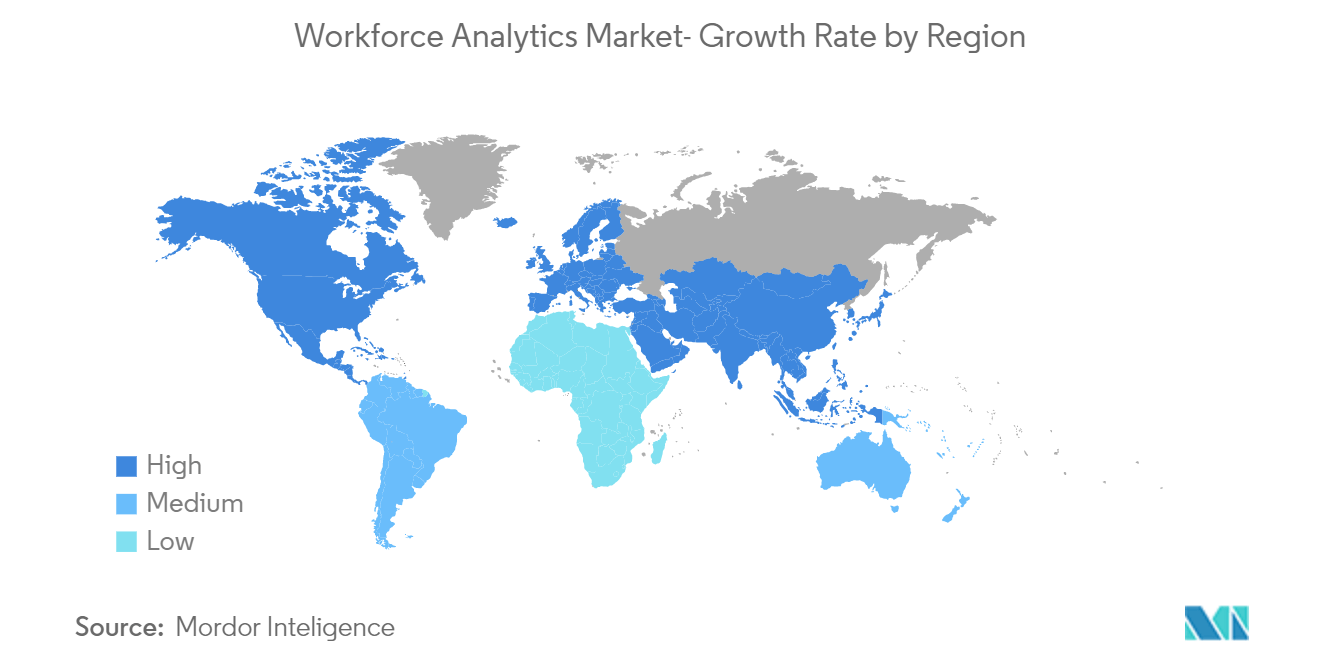
Workforce Analytics Industry Overview
The workforce analytics market is highly competitive. Many multinational companies, such as IBM Corporation, Oracle Corporation, Accenture, and Capgemini SE, are a few of the major players. The rising demand for better structures for talent and recruiting functions is creating immense opportunities among SMEs and large enterprises.
- In November 2022, to assist businesses in quickly making data-driven decisions and dealing with unforeseen disruptions, IBM unveiled new software to help organizations break down data and analytics silos. A comprehensive perspective of data sources from throughout the user's whole business is offered by the business intelligence planning, budgeting, reporting, forecasting, and dashboard capabilities of IBM Business Analytics Enterprise. To help eliminate silos and ensure that the appropriate teams have access to the appropriate data at the proper time, IBM Business Analytics Enterprise was created. For example, a company's sales, HR, and operations teams need access to data and insights from various business intelligence and planning tools for their individual needs, such as maximizing sales targets, creating workforce forecasts, or estimating operational capacity.
- In October 2022, Braincourt, a provider of business intelligence and data science services, was acquired by Capgemini. The acquisition will strengthen Capgemini's in-demand data and analytics capabilities in Germany and Northern Europe. In particular, throughout the governing domains of essential business operations like finance, HR, production, and logistics, Braincourt has established a reputation for having industry-leading capabilities in business intelligence, data science, and sophisticated project management services. Leading automotive, construction, energy, and telecommunications companies are among Braincourt's clients, which are an excellent match for Capgemini's clientele.
Workforce Analytics Market Leaders
-
IBM Corporation
-
Oracle Corporation
-
Accenture plc
-
Capgemini SE
-
Tableau Software
- *Disclaimer: Major Players sorted in no particular order
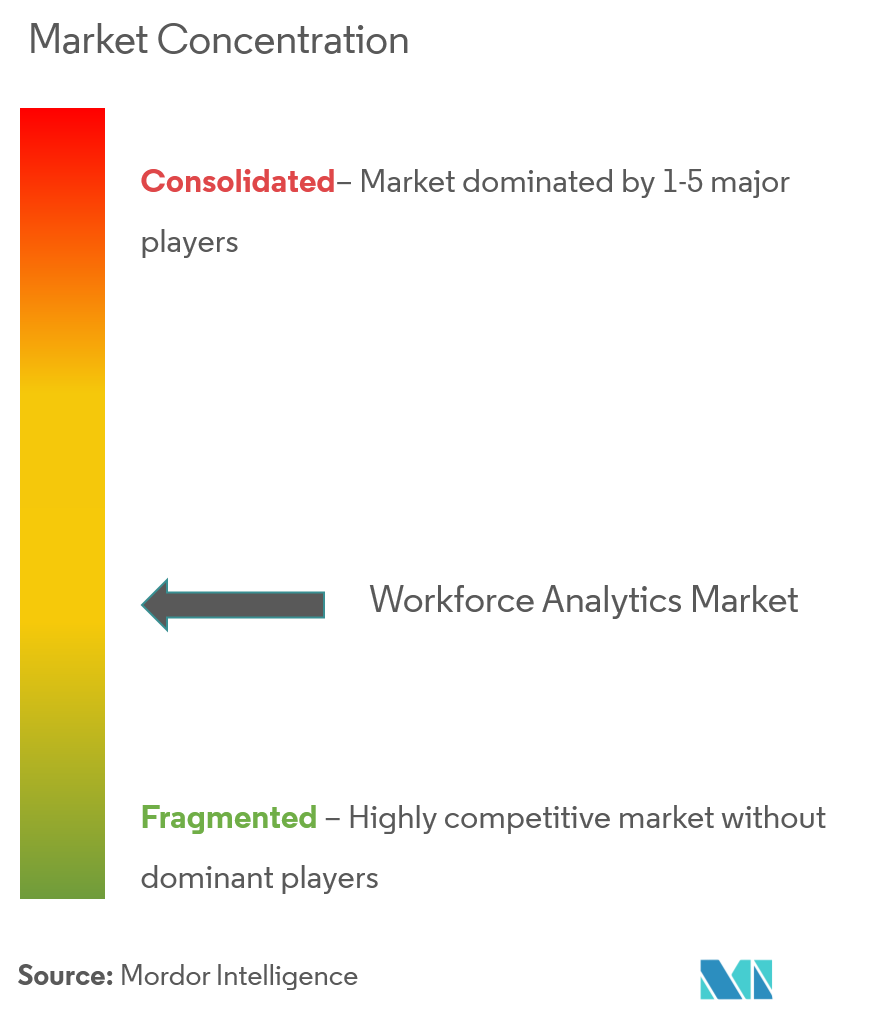
Workforce Analytics Market News
- September 2022: ActivTrak partnered with Google Workspace to provide personal work insights that enable employees to improve their digital work habits and wellness. Customers can embed individual work metrics into their Google Workspace applications with ActivTrak for Google Workspace, giving employees immediate visibility to help them redesign their workday, protect focus time, and improve well-being.
- August 2022: ADP has launched Intelligent Self-Service, which assists employees with common issues before they need to contact their HR department for assistance. Based on an analysis of data from across ADP's ecosystem, the product employs predictive analytics and machine learning to predict which issues may arise.
Workforce Analytics Industry Segmentation
Human capital is an asset for any organization, and to study the people data and gather the data internally helps in increased productivity, increased employee satisfaction, and a low employee turnover rate. With the advancements in technology and an increase in global trade, the dynamic change in the workforce has made it necessary for management to utilize workforce analytics to better optimize customer needs and the employee workforce.
The Workforce Analytics Market is Segmented by Component Type (Solutions (Talent Acquisition and Development Optimization Services and Pay Roll and Monitoring) and Services (Professional Services and Managed Services)), by Deployment Type (On-cloud and On-premises), by Organization Size (Small- and Medium-Sized Enterprises and Large Enterprises), by End User ( BFSI, Manufacturing, IT & Telecom, Healthcare, and Retail), and by Geography (North America, Europe, Asia-Pacific, Latin America, and Middle East and Africa).
The market sizes and forecasts are provided in terms of value (USD million) for all the above segments.
| By Component Type | Solutions | Talent Acquisition and Development Optimization Services | |
| Pay Roll and Monitoring | |||
| Service | Professional Services | ||
| Managed Services | |||
| By Deployment Type | On-cloud | ||
| On-premises | |||
| By Organization Size | Small- and Medium-Sized Enterprises | ||
| Large Enterprises | |||
| By End-user Industry | Banking, Financial Services, and Insurance (BFSI) | ||
| Manufacturing | |||
| IT & Telecom | |||
| Healthcare | |||
| Retail | |||
| Other End-user Industries | |||
| Geography | North America | ||
| Europe | |||
| Asia-Pacific | |||
| Latin America | |||
| Middle East and Africa | |||
Workforce Analytics Market Research FAQs
What is the current Workforce Analytics Market size?
The Workforce Analytics Market is projected to register a CAGR of 15.64% during the forecast period (2025-2030)
Who are the key players in Workforce Analytics Market?
IBM Corporation, Oracle Corporation, Accenture plc, Capgemini SE and Tableau Software are the major companies operating in the Workforce Analytics Market.
Which is the fastest growing region in Workforce Analytics Market?
Asia Pacific is estimated to grow at the highest CAGR over the forecast period (2025-2030).
Which region has the biggest share in Workforce Analytics Market?
In 2025, the North America accounts for the largest market share in Workforce Analytics Market.
What years does this Workforce Analytics Market cover?
The report covers the Workforce Analytics Market historical market size for years: 2021, 2022, 2023 and 2024. The report also forecasts the Workforce Analytics Market size for years: 2025, 2026, 2027, 2028, 2029 and 2030.
Our Best Selling Reports
Workforce Analytics Tool Industry Report
Statistics for the 2025 Workforce Analytics market share, size and revenue growth rate, created by Mordor Intelligence™ Industry Reports. Workforce Analytics analysis includes a market forecast outlook for 2025 to 2030 and historical overview. Get a sample of this industry analysis as a free report PDF download.



